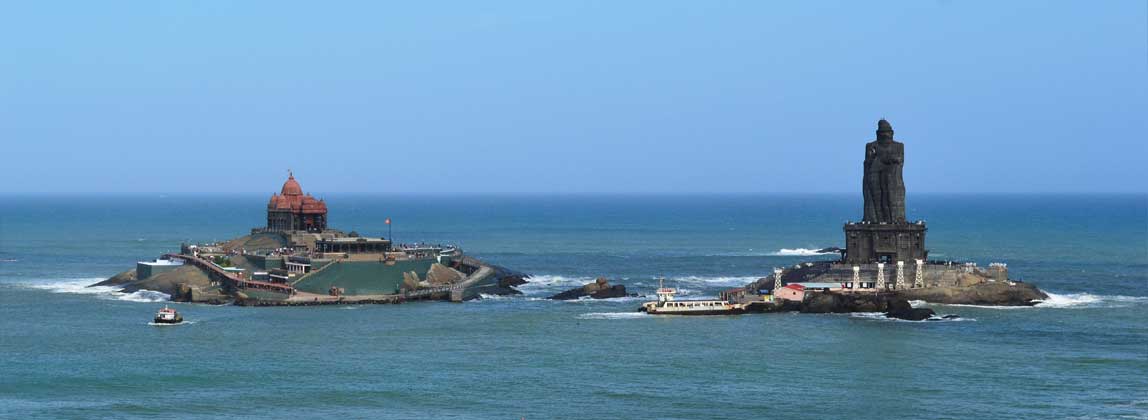


Next to the Kumari Amman Temple, this striking memorial stored the Mahatma's ashes until they were immersed in the sea. It resembles an Orissan temple and was designed so that on Gandhi's birthday (2nd October), the sun's rays fall on the place where his ashes were kept.
It is open daily from 7 am to 12.30 pm and 3 to 7 pm.
Picturesquely situated overlooking the shore, this temple and the nearby ghat attract pilgrims from all over India to worship and to bathe. According to legend, Devi did penance here to secure siva's hand in marriage when she was unsuccessful, she vowed to remain a virgin (kanya). The temple is open daily from 4.30 to 11.45 am and from 5.30 to 8.30 pm, but non-Hindus are not allowed into the inner sanctrum. Men must remove their shirts and everyone their shoes on entering the temple.
IMP: The temple is open daily from 4.30 to 11.45 am and from 5.30 to 8.30 pm, but non-Hindus are not allowed into the inner sanctrum. Men must remove their shirts, and everyone their shoes on entering the temple.
It was the home of the Rajas of the Travancore (1550 to 1750 CE) in southern Kerala. The palace was constructed around 1601 AD and is surrounded by a 4 km-long stone fort built at the same time. The buildings are constructed from wood and stone and built in Kerala's indigenous style of architecture. Contained within the complex is a collection of 14 palaces and 127 beautiful royal rooms, many of which feature ornate wood carvings. The carved ceilings of the palace depict 90 varieties of flowers. Paintings, hundreds of year old, and stone statues, some over 1000 years old, are on display on the palace grounds.
Suchindram Temple is situated at a distance of 13 km northwest from Kanya-kumari. It is believed that Lord Siva stayed at this place when Devi came for self-punishment at Kanyakumari. Suchindram Temple has a large white coloured entrance known as `gopuram`, which is 40 meter in height. This notable temple of Tamil Nadu has long pillared halls. The stories from the great epics Ramayana and Mahabharata are depicted in the walls of the temple. The temple is a seven-storied construction.
This memorial is on two rocky islands projecting from the sea about 400 m offshore. The Indian philosopher Swami Vivekananda came here in 1892 and sat on the rock, meditating, before setting out as one of India's most important religious crusaders. The mandapam, which stands here in his memory was built in 1970 and reflects architectural styles from all over India.